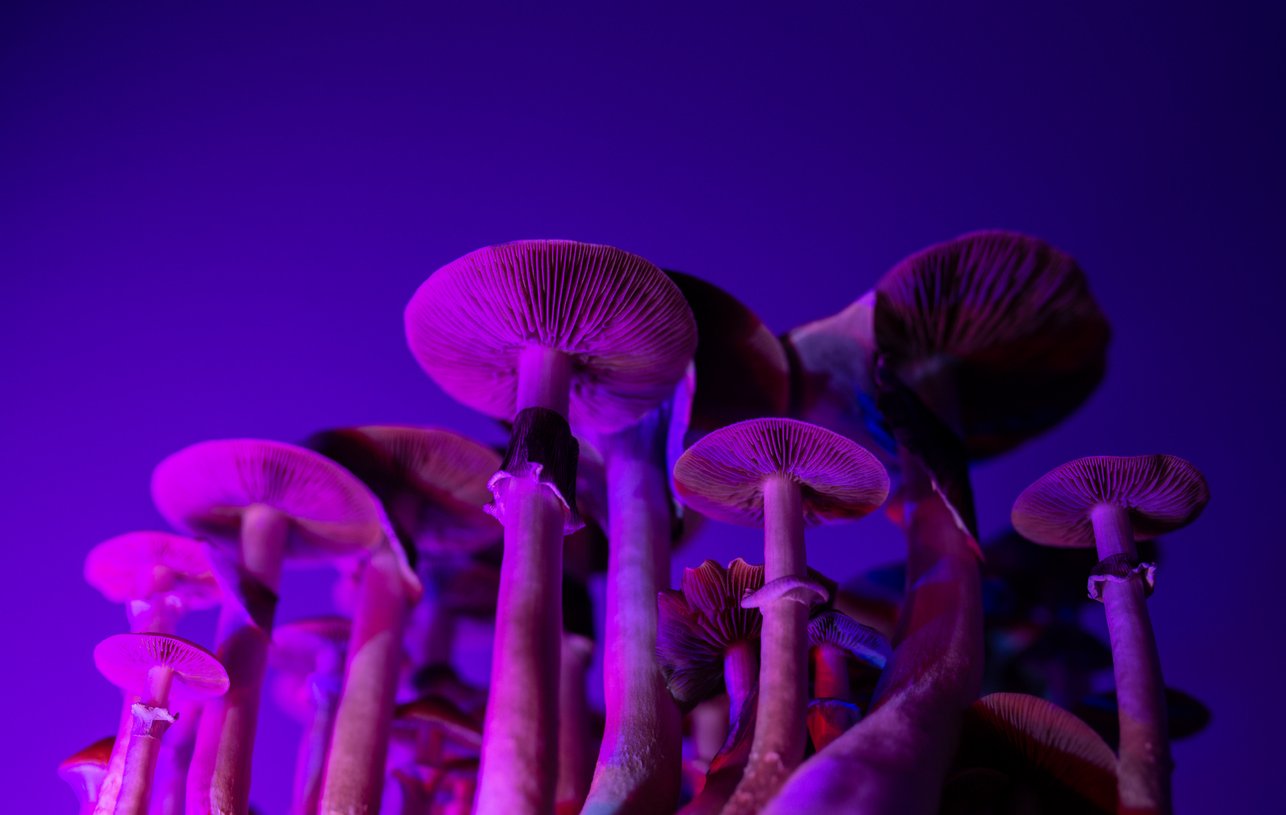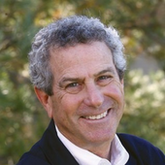Psychedelics for Serious Illness: Five Things Clinicians Need to Know

Articles about psychedelic treatments for persistent depression, PTSD, and substance use disorder seem to be everywhere. Rarely a week goes by without a newly published study appearing in a peer-reviewed medical journal, usually followed by reports of the study in prominent news outlets.
Anyone born after 1970 may find themselves wondering, “What’s going on?” Until recently, psychedelics seemed to be artifacts of a bygone era of anti-war protests, hippies, Hair, and classic vinyl.
Here’s what you need to know.
1. These drugs have a long history.
Psychedelics actually have a long history. Archaeological evidence shows that early humans ingested specific plants and mushrooms, which produce chemicals with psychedelic properties. For millennia, indigenous people in Asia, Central and South America have used experiences induced by psychedelics as central components of sacred ceremonies. Western medicine’s examination of these drugs dates to the synthesis of LSD (lysergic acid diethylamide) in 1938 by Albert Hoffman, a Swiss chemist working for the Sandoz pharmaceutical company. Hofmann had been researching vasoactive compounds and initially set aside LSD. In 1943 he inadvertently absorbed some of the chemical transcutaneously and had the first LSD-induced psychedelic experience.
Recognizing its intense psychic properties, Sandoz offered LSD to psychiatrists who were interested in exploring its therapeutic potential. From 1950 through early 1970s, licensed physicians could administer or prescribe LSD to patients. Research flourished in the form of bench science, case studies and small, non-randomized trials. Before falling victim to the excesses and cultural-political tensions of the era, more than 1,000 articles about psychedelics were published in the medical literature. Then the Nixon administration reclassified psychedelics as Schedule I drugs, signifying high potential for abuse and no legitimate use. Research ceased.
But seeds had been planted in the minds of a handful of clinicians and investigators. Early in the present century the FDA granted permission to researchers at UCLA, NYU, and Johns Hopkins universities to conduct small, well-designed trials of psilocybin-assisted therapy. Consistent with previous findings, a large majority of patients with cancer and concomitant depression or anxiety demonstrated substantial improvements on standard scales. Notably, these benefits were often sustained through months of follow up. Publication of these studies ushered in the current renaissance of psychedelic-assisted therapies.
"Consistent with previous findings, a large majority of patients with cancer and concomitant depression or anxiety demonstrated substantial improvements on standard scales."
2. These are experiential therapies.
Given the attention that LSD (Acid), psilocybin (Magic mushrooms) or MDMA (Ecstasy and Molly) attract, it is easy to think of psychedelic-assisted therapies as drug treatments. Obviously, in some sense they are. However, important distinctions exist between psychedelic-assisted therapies and treatment with an antidepressant, anxiolytic, analgesic, or anticonvulsant medication. Medications for affective disorders are usually administered one or more times daily and produce therapeutic effects through sustained changes in the brain’s chemical milieu and neurophysiology. Psychedelics are typically administered once, or in a series of 2 to 3 times, and only alter brain chemistry and physiology for brief periods of time.
"[...] Important distinctions exist between psychedelic-assisted therapies and treatment with an antidepressant, anxiolytic, analgesic, or anticonvulsant medication."
Therapeutic effects of psychedelics result from experiences they can evoke. The psychedelic-induced experiences are not intoxication, sedation or clouded sensorium of the sort caused by opioids, benzodiazepines, or alcohol. Patients given psychedelics under therapeutic circumstances typically report heightened physical sensations, enhanced clarity and understanding associated with fresh insights and perspectives about themselves, their relationships to others and to the natural world. People commonly describe a visceral sense of meaning, heightened love for others, appreciation for life and diminished fear of death. In published research, participants who described their experiences in spiritual terms tended to have large and sustained improvements in scales of mood and well-being.
Psychedelic research protocols begin with screening for contraindications, followed by two or more preparatory counseling visits over a period of days or weeks. The psychedelic medication is administered in a single dose to produce an experience lasting approximately 6-10 hours. The psychedelic sessions take place in comfortable, esthetically pleasing settings. Participants are encouraged to lie recumbent, use eyeshades, and listen to selected music. Two therapists or trained guides are present throughout the experience to comfort and guide participants and assist them with practical needs, such as getting to a bathroom. This session is followed by one or more post-session counseling visits, usually beginning one or two days after the experience.
Current understanding is that psychedelic medications work by temporarily relaxing the default mode network. These long-established patterns of interaction between specific functional components of the brain (medial prefrontal cortex, posterior cingulate cortex/precuneus and angular gyrus) which begin developing in childhood are loosened during psychedelic experiences. The world presents itself afresh, as if one were an infant or young child who has yet to associate objects or people with expectations and feelings. Being freed from assumptions, cognitive filters, and emotional associations is inherently disorienting, often confusing, and occasionally terrifying. With skillful guidance and reassurance, however, the experience can be wondrous and awe-inspiring. People commonly describe a deepened appreciation for the beauty of nature, an intense sense of love for important people in their lives and gratitude for being alive.
"People commonly describe a deepened appreciation for the beauty of nature, an intense sense of love for important people in their lives and gratitude for being alive."
If it strains credulity that a single experience can result in enduring shifts in a person’s world view, quality of life and satisfaction with life, consider the personal accounts of people who survive near-death experiences. Many relate that the experience transformed their life, leading them to reprioritize work and personal time, recommit to loving relationships, reinvest time and energy in creative interests or spiritual practices. Without exception people express being more appreciative and satisfied with their lives than they were before their brush with death.
The analogy of near-death experiences is apt. During the early phases of a psychedelic experience, as even basic assumptions loosen, a person’s very sense of self may dissolve, leading to a brush with non-existence.
3. Psychedelics are not all the same.
Clinicians will encounter a variety of terms for specific categories of psychedelic compounds. So-called classical psychedelics include most naturally derived drugs in this class, such as peyote, amanita muscaria, DMT (N,N-Dimethyltryptamine), psilocybin, and ayahuasca, as well as synthetic LSD. Drugs in this group are also referred to as entheogens, from Greek éntheos "possessed by a god, inspired." These agents are thought to predominantly act on serotonin (5-HT) receptors.
MDMA (N-Methyl-3, 4-methylenedioxyamphetamine), also a synthetic, is referred to as an empathogen, which connotes its tendency to evoke strong emotional connections and feelings of love. It is active at 5-HT and NMDA receptors.
Ketamine is a common FDA-approved dissociative anesthetic. In moderate, subanesthetic doses, ketamine is an atypical psychedelic producing experiences similar to entheogens. Ketamine acts mainly on NMDA glutamate receptors.
4. Palliative care teams will be caring for patients who undergo psychedelic experiences. A few already are.
People living with serious illness commonly experience persistent anxiety, depression, and demoralization despite comprehensive palliative care and evidence-based counseling. Currently available medications come with bothersome side effects, antidepressants may require weeks to take effect, and often fail to sufficiently alleviate emotional and existential suffering. Patients may be left with the sense that life is not worth living.
It’s easy to understand why interest in these modalities is strong among some patients we currently serve as well as some clinical colleagues.
The Aquilino Cancer Center in Maryland is currently researching a group therapy model with patients undergoing cancer treatment that includes a guided psilocybin-induced session. If shown to be beneficial, Aquilino clinicians hope to add such therapy as a supportive care option to their standard treatment protocols.
A few psychiatrists, anesthesiologists, and palliative care clinicians are administering ketamine in psychedelic doses to complement therapy for patients with serious medical conditions which may include ALS, organ failure and early dementia. Free-standing ketamine clinics provide off-label intermittent infusions to treat depression and may begin offering higher doses of ketamine for people seeking psychedelic experiences.
Legal access to classical psychedelics is also expanding. Multiple cities and states have legalized or lowered legal penalties for possession and use of psilocybin and others are poised to do so. Some patients with terminal conditions are applying to use state or federal “Right to Try” laws to gain access to psychedelic-assisted therapies.
In November 2020, Oregon voters passed Ballot Measure 109 requiring the Oregon Health Authority to establish regulations for licensed providers to administer psilocybin to adults at “psilocybin service centers,” without any qualifying medical diagnosis. Similar legislation and citizen initiatives enable people who want to explore existential questions and spiritual experiences to undergo psychedelic experiences.
To date, psychedelic research designs have excluded people with advanced cardiac or respiratory disease, brain tumors, and dementia. Planned studies will examine the potential benefits and delineate risks and safety measures for administering psychedelics to patients with these conditions.
5. Caution is warranted; well-planned participation is prudent.
There is reason to worry about unprescribed, unprepared, and inadequately supervised use of psychedelics—particularly by people with serious medical conditions. Most side effects of psychedelics, such as headache, nausea, and insomnia are mild and self-limited. Although serious adverse effects are uncommon, acute hypertension and severe psychological distress can occur.
It is not only underground use of these drugs that should concern us. Within above-ground health care, the same transactional business models that gave rise to pain clinics may engender psychedelic dosing centers that are primarily profit centers.
"Most mature palliative care programs are well-positioned to reliably provide psychedelic-assisted therapies as safely as possible."
In contrast, most mature palliative care programs are well-positioned to reliably provide psychedelic-assisted therapies as safely as possible. Psychedelic sessions optimally take place within the context of an ongoing trusting relationship. Best practices encompass a) individualized patient evaluation and screening for contraindications, b) preparation to inform and foster positive mindset, c) a physical setting that is comfortable and calming, d) skilled accompaniment during the session, and e) post-session counseling to help in making sense of the experience. Guides accompanying patients during sessions need immediate access to clinicians with expertise and resources to manage severe adverse events.
"Their potential for alleviating suffering and improving quality of life for people we serve is sufficient reason to consider integrating psychedelic-assisted therapies within palliative care programs and practice."
Their potential for alleviating suffering and improving quality of life for people we serve is sufficient reason to consider integrating psychedelic-assisted therapies within palliative care programs and practice. Safety concerns should compel rather than repel us from doing so. Simply put, when and where these medications are legally available, if we don’t offer these modalities to our patients, somebody else will.
Related Content
For more on psychedelics, watch the on-demand Master Clinician session, "How Psychedelics Can Be Used for Relief of Spiritual and Existential Suffering". In this session, Sunil K. Aggarwal, MD, PhD, FAAPMR describes the spiritual and existential dimension of health necessary for understanding therapeutic applications of entheogens in medicine and public health.

Be the first to read articles from the field (and beyond), access new resources, and register for upcoming events.
Edited by Melissa Baron. Clinical review by Andrew Esch, MD, MBA.
